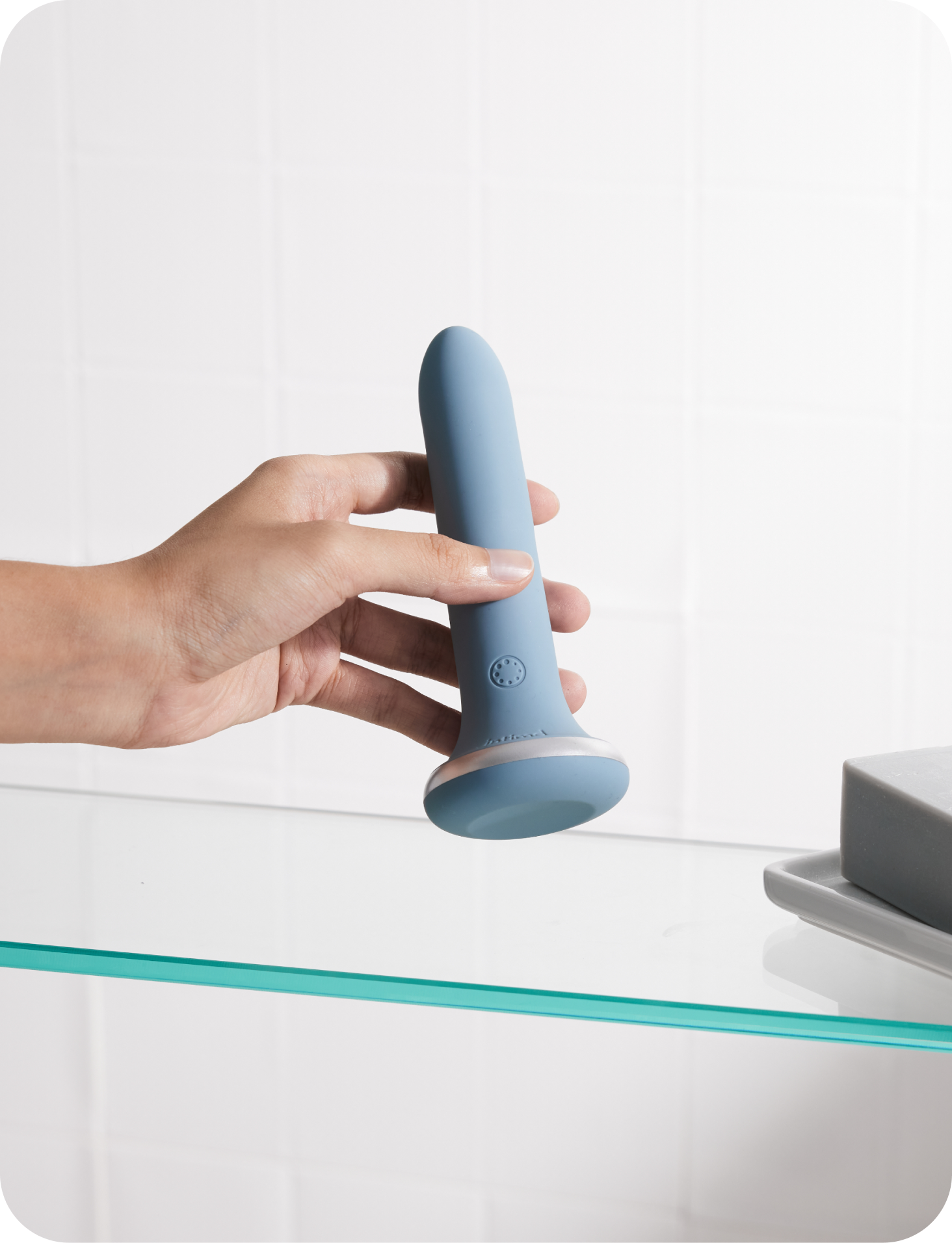If you've experienced vaginal pain during penetration, intercourse, or menopause, vaginal dilators (trainers) can be an effective treatment option to reduce discomfort. This article will discuss vaginal dilators, focusing on their usage, the conditions they can treat, and tips on how to use them.
Table of Contents
- What Are Vaginal Dilators?
- What Is a Vaginal Dilator Used For?
- How Do I Choose a Vaginal Dilator?
- How to Use Vaginal Dilators?
- How Long Do Dilators Take to Work?
- Conclusion
What Are Vaginal Dilators?
Vaginal dilators, also known as vaginal trainers, are tube-shaped medical devices designed to gently stretch and gradually widen the vaginal walls. They typically come in kits with increasing sizes; they range from small to large and are made from medical-grade materials like silicone or plastic. Inserting vaginal dilators into the vagina can help women train or relax their pelvic floor muscles.
What Is a Vaginal Dilator Used For?
Vaginal dilator therapy, often recommended by healthcare professionals, addresses discomfort and anxiety caused by various conditions leading to painful intercourse or penetration. Dilators also benefit women during after-surgery recovery, preventing scarring and maintaining tissue flexibility.
Here are health conditions that could benefit from vaginal dilators:
Vaginismus
Vaginismus manifests through involuntary vaginal muscle spasms and contractions during penetration. This can make sexual intercourse or tampon insertion difficult and painful.
Dyspareunia
Dyspareunia is the medical term for painful intercourse, defined by persistent or recurrent pain in the pelvic or genital area occurring just before, during, or after sex. This can happen for a variety of reasons, including:
-
Complications from childbirth
Menopause
Menopause causes several hormonal changes, which can lead to the lining of the vagina becoming thinner and less stretchy due to low estrogen, resulting in painful sex.
Gynecologic surgery and cancer therapy
Sometimes, vaginal tissues can be affected by factors such as surgery, radiation, or trauma. Dilators are often recommended as part of the healing process. Using dilators can support in preventing the formation of scar tissue and maintains the newly created vaginal structure. Always follow your surgeon's instructions for post-surgery care.
Vaginal stenosis
Vaginal stenosis is the narrowing and shortening of the vagina caused by factors like surgery, radiation, scarring, or hormonal changes. It leads to discomfort, pain, and issues with intercourse, tampon insertion, and pelvic exams.
Pudendal neuralgia
Pudendal neuralgia is chronic pelvic pain linked to pudendal nerve issues arising from compression, inflammation, or trauma. The discomfort is felt in the buttocks, perineum, and genital region, affecting activities like sitting, sex, or urination.
MRKH syndrome
Mayer-Rokitansky-Küster-Hauser (MRKH) syndrome is a rare congenital condition where the uterus and part of the vagina don't fully develop in females. It can make intercourse or penetration difficult.
How Do I Choose a Vaginal Dilator?
Vaginal dilators are available in various materials, from medical-grade silicone to hard plastic. If you have sensitivities to certain materials, always consult your healthcare provider for guidance on the appropriate material that suits your situation.
Dilators also vary in size and thickness. The 'right' size for you depends on the tightness or narrowness of your vagina and the size of the dilator that can be inserted without causing pain or discomfort.
How to Use Vaginal Dilators?
Inserting a dilator may feel painful at first. The therapy session takes about 10 to 15 minutes. Aim to use the dilator 3 to 4 times per week, but avoid doing it 2 or more days in a row. Doing dilator therapy on consecutive days could lead to pain or irritation.
Here's a step-by-step guide on how to properly insert a vaginal dilator:
-
Wash your hands thoroughly with soap and water. Ensure the dilator is clean and sanitized.
-
Find a comfortable, private space where you can relax without interruptions.
-
Lie in a comfortable position on your back with your legs bent at the knees. You might consider using pillows for better access.
-
Apply a generous amount of water-based lubricant to the dilator for smoother gliding.
-
Begin with your set’s smallest dilator, holding it like a tampon, and gently guiding the tapered end toward your vaginal opening.
-
Insert the dilator slowly until you feel some resistance, then stop. Don’t force it unless you're comfortable doing so. The goal is to gradually stretch the vaginal tissues over time.
-
Do Kegel exercises to relax vaginal muscles for easier insertion, if needed. Deep breaths also help relax the pelvic floor. It's not necessary to insert the dilator all the way in.
-
Gently move the dilator within the vagina for a few minutes—push in/pull out or rotate—while keeping your muscles relaxed.
-
Carefully remove the dilator after 15 minutes.
-
After use, clean the dilator with mild soap and water. Air dry or use a paper towel before storing it in a clean, dry place.
As you progress through vaginal dilator therapy, gradually increase the size over time as you feel more comfortable. It's normal to experience a small amount of bleeding after using the dilator for the first few times. If you encounter persistent pain, difficulty, or heavy bleeding while using the dilators, please contact your doctor.
How Long Do Dilators Take to Work?
The duration of vaginal dilator therapy depends on individual factors, such as your symptoms, consistency in treatment, and how your body responds. It's best to discuss your expectations and concerns and arrange regular follow-ups with your healthcare provider. They can provide you with personalized guidance based on your specific situation and support you in determining how long you may need treatment.
Patience is key when using vaginal dilators. The goal is to gradually improve the flexibility of your vagina and the strength of your pelvic muscles, making penetration more comfortable.
Conclusion
Vaginal dilators are a safe at-home treatment for women who struggle with vaginal discomfort. If this is something you are experiencing, talk with your healthcare provider about it or explore VWELL.
With vaginal wellness and health in mind, VWELL vaginal wands help train and relax pelvic floor muscles, reducing discomfort and building confidence for women experiencing pelvic pain. Shop our dilator products and related items, and start your journey toward better well-being.
FAQs
1. What are the side effects of using a vaginal dilator?
Using vaginal dilators is generally safe, but minor side effects like bleeding, spotting, allergic reactions, or discomfort can occur, mainly if not used correctly. These effects are usually temporary. For severe pain or other discomfort, contact your healthcare provider.
Emotional discomfort is also possible. Some individuals may experience anxiety, embarrassment, or unease using dilators. Talking to a therapist or healthcare professional can help.
2. Will vaginal dilators loosen down there?
Vaginal dilators gradually stretch pelvic muscles and scar tissues to improve flexibility and ease discomfort during tampon use, medical exams, or sexual intercourse. They don’t "loosen up" in the sense of making the vagina permanently wider.
3. Do I need a prescription for vaginal dilators?
You do not need a prescription to purchase vaginal dilators. They are often available for purchase in retail pharmacies and online. However, it's recommended to consult with your healthcare provider before using dilators. They can assess whether a vaginal dilator is a suitable treatment method for you based on your medical history and symptoms.
4. Can my partner be involved in the process?
Involving your partner using vaginal dilators can offer emotional support, communication, and shared understanding. They can accompany you to appointments, provide encouragement, and contribute to a more comfortable process.




